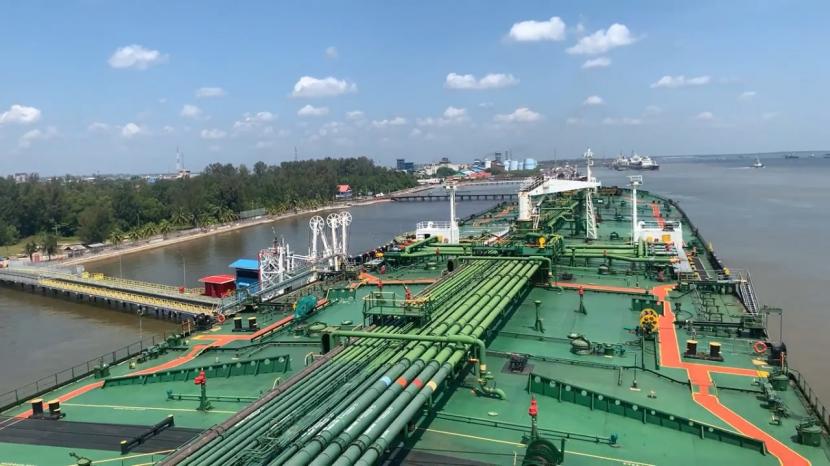REPUBLIKA.CO.ID, JAKARTA -- Amid the surge of clean energy transition campaigns and programs to achieve Net Zero Emissions (NZE) by 2060, fossil energies such as oil and gas (migas) is not necessarily left out of the blue. The existence of oil and gas is still needed as a support to the clean energy transition going forward.
Director General of Oil and Gas of the Ministry of Energy and Mineral Resources (ESDM) Tutuka Ariadji, explained that recently there have been several discoveries of oil and gas sources from Cooperative Contracting Contractors (KKKS) operating in Indonesia. Among them such as in northern Sumatra, north of Bali Island, north of Lombok Island, as well as in Makassar Strait.
“Therefore, the government is looking for a middle way by still using renewable energy in the future but also making the most of existing fossil energy, that is a strategy that is expected to be implemented,” Tutuka said, in his statement, Sunday (29/10/2023).
Tutuka also believes that oil and gas investment opportunities in Indonesia are very wide open, given the huge potential of oil and gas resources. From January 2023 data, proven petroleum reserves in Indonesia reached 2.41 billion barrels, while proven reserves of natural gas stood at 35.3 trillion cubic feet.
“Our proven reserves are only 10 percent of the potential resources, or it can be interpreted that our resource potential is 10 times that of the proven reserves,” he added.
There's need for deeper studies, as additional data will then be analyzed and evaluated for drilling in several basins with great oil potential. Such as South Sumatra, East Java, Sumatra is centered around the Rokan Block, while for gas it is in Bintuni, Kutai, and North Sumatra.
To attract investors, Tutuka said, the government provides attractive regulations. It is providing a share split no longer at 85-15, but starting from 80-20, where the government's share is 80 percent, and KKKS is 20 percent.
As the risks determined by geological and geophysical experts increase, the government's share will decrease, where for natural gas it could be 50-50, and petroleum 55-45, or the government's share is 55 percent and the remainder is KKKS' share.
"Providing other incentives such as accelerated depreciation, FTP (First Tranche Petroleum), and others, these can also be discussed together and proposed to the government. We always try to speed up AMDAL (environtmental requirement regulation), together with the Ministry of Environment and Forestry," said Tutuka.
In the downstream oil and gas sector, the government continues to strive to increase the development of strategic natural gas infrastructure to encourage interconnectivity of the natural gas network.
One of them is the construction of the Cirebon-Semarang natural gas transmission pipeline (CISEM), which has just been connected to the Semarang-Batang section, 60 KM long, and construction of the Cisem Phase II gas pipeline (the Batang-Kandang Haur Timur section) 249 KM long will begin in 2024.
The government will also build a 400 km long Dumai-Sei Mangke gas transmission pipeline. If the Dumai-Sei Mangke section is completed, excess gas in East Java can be transferred to West Java and Sumatra.
Tutuka said that if the downstream oil and gas infrastructure is ready, then the gas flow from upstream can be channeled to the fertilizer or chemical industry, or channeled to Special Economic Zones (KEK).
"This is an example of integration between upstream and downstream, so if gas potential is discovered, more or less like that, this country will have the power to build its own industry for national security, not just energy security," he stressed.
By the end of the third quarter of 2023, total investment realization in the oil and gas sector, both upstream and downstream, had reached 61 percent of the target or reached 10.61 billion US dollars from the 2023 prognosis of 17.44 billion US dollars.
Of the total oil and gas investment, the upstream oil and gas investment figure reached US$8.99 billion from the 2023 prognosis target of US$15.56 billion. Meanwhile, the downstream oil and gas investment figure is 1.6 billion US dollars from the forecast target of 1.88 billion US dollars, or reaching 85 percent.


